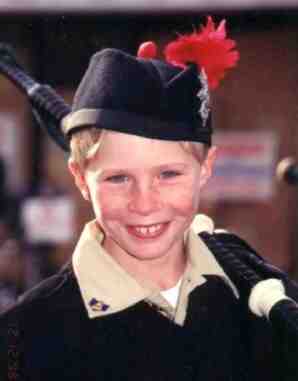
Figure 1.--Some of the most easily recognizeable band uniforms are Irish and Scottish pipe bands. They are readily recognizable around the world.


Figure 1.--Some of the most easily recognizeable band uniforms are Irish and Scottish pipe bands. They are readily recognizable around the world. |
There are many different types of marching bands. Some of the most famous are Scottish and Irish pipe bands. These bands have been formed all over the world, wherever the Scotts and Irish spread. Drums bands have also been formed to accompany marching units. Americans often think about school bands when the subject of marching bands arrises. Both high schools and junior highschools almost always have uniformed marching bands. Almost always these bands select elaborate military styled uniforms. Schools in other countries often have bands, but they are less commonly uniformed marching bands. ome Scout groups also have bands, but this is primarily an English Scout activity.
Some of the most popular bands for boys are:
There are both Scottish and Irish pipe bands. These bands, except for the school ones, include both men and boys. A few in recent years have added girls. They give
great attention to the uniform, which always is a kilt.
There are also Scottish and Irish pipe bands. These bands, except for the school ones, include both men and boys. A few in recent years have added girls. They give
great attention to the uniform, and like the piope bands often wear kilts.
School marching bands are most associated with America. Both high schools and junior high schools in America almost always have uniformed marching bands. I am not positive yet about the chronology here, but believe that it is a devlopment associated with the immense popularity of march music as popularized by John Philip Souza. Perhaps an even more important was the immense popularity of inter-collegaite sports, especially football in the late 19th century. Thus by the early 20th century had spread to high schools as inter-scholastic sports developed in America. Schools in other countries often have bands, but they are less commonly uniformed marching bands. Often foreign schools, except in Europe, require school uniforms.
Many towns and villages in the 19th century had marching bands that were used for a wide range of civic functions. These bands were usually all male, but included a wide range of members in terms of age. They were not all-boy bands, but we include them here because boys and youths were commonly members. This varied from town to town. Of course American will instantly think of the River City Marching Band in "Music Man". These bands were very common in both America and Europe. The uniforms varied as did the quality of the music. Some bands had elaborate uniforms, but most did not because of the cost. Usually at least some attempt at uniforms was made such as matching caps.
Some youth groups, especially Scouts groups also have bands, but this is primarily an English Scout activity. The Hitler Youth also were noted for their drum and byggle groups accompamying marching units. An assessment of youth group bands is archived on the Historical Boys' Uniform satellite site.
HBC has obtained information on some band uniforms that it can not yet identify. In some cases HBC is not even positive that they are band uniforms. Generally speaking, however, HBC believes that brightly colored, mulitary-style uniforms are generally for marching bands.
Boys have participated in marching bands in many different countries. The uniforms employed have beern very destinctive. Some as in Ireland and Scotland are folk costumes. Others such as in England have been associated with youth groups. Some countries as in Greece have military inspired uniforms. Most American high schools have marching bands and their uniforms vary widely, although military styles in the John Philip Souza tradition are perhaps the most common.
Navigate the Boys' Historical Clothing Web Page
[Return to the Main band page]
[Introduction]
[Activities]
[Biographies]
[Chronology]
[Clothing styles]
[Countries]
[Bibliographies]
[Contributions]
[FAQs]
[Glossaries]
[Satellite sites]
[Tools]
[Boys' Clothing Home]
Related Chronolgy Pages in the Boys' Historical Web Site
[Main Chronology Page]
[The 1880s]
[The 1930s]
[The 1940s]
[The 1950s]
[The 1960s]
[The 1970s]
[The 1980s]
Navigate the Historic Boys' Clothing Web style pages:
[Kilts]
[Caps]
[Sailor suits]
[Sailor hats]
[School uniform]
[Youth group bands]
